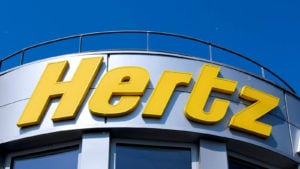But retail investors should pay close attention to the way top analysts and “smart money” operators position themselves in today’s economic climate. Though we’re still (technically) in a bull market, increased nervousness around higher interest rates and Magnificent Seven concentrations point to wider bearish tendencies throughout the analyst class.
Therefore, investors should take note when analysts upgrade stocks today. Sure, upgrades are easy in an era of “stocks go up.” Yet, they’re harder to justify when compressed margins and reduced profitability pressure growth sectors. Likewise, analysts offering upgrades do so with greater due diligence than they may have in the past. And this reinforces their bull thesis with an emphasis on fundamentals rather than high-flying dreams.
Analysts upgraded these three companies this week, so investors should pay attention to their reasoning.
Netflix (NFLX)

Netflix (NASDAQ:NFLX) is low-hanging fruit when it comes to analyst upgrades. The company’s recent earnings report showed stellar growth and smart moves by management to position the media company amid shifting consumer trends. The number of bullish analysts polled by research firm EquitySet jumped to 20 from 6 after the report, with just one calling the stock a sell.
The report was strong across the board. Netflix posted a 12% revenue growth, 3% operating margin improvement, and $6.9 billion in free cash flow. Of course, the big news impacting Netflix this week is the announcement of the TKO Group Holdings (NYSE:TKO) partnership that will bring live-streamed wrestling to the platform. While Netflix affirmed its position as an entertainment provider rather than a sports platform, which fits within the deal’s spirit. Yet further indications point to a larger sports-based pivot on the horizon.
Last summer, Morgan Stanley analysts echoed the apparent pivot, saying, “Eventually we expect Netflix to move into live sports, particularly as it scales in [free cash flow] generation and has the ability to invest in major sports rights around the world. In addition, as its advertising capabilities scale, we think live sports will fit well into its content offering.”
Hertz (HTZ)

After a few very difficult years, Hertz (NASDAQ:HTZ) might be positioned for a reversal if Morgan Stanley analyst upgrades are any indication.
In the note, analyst Adam Jonas pinned Hertz’s per-share price at $15, nearly double its current trading price. Jonas pointed to Hertz’s decision to sell off a chunk of its electric vehicle (EV) fleet. It is seen as a wise financial decision, benefitting the company in the long term.
Hertz decided to limit its EV fleet largely on the heels of higher maintenance and repair costs combined with reduced customer interest in EVs when picking a rental car. And, while Hertz will likely have to write down much of its remaining fleet as values fall, the sale will likely infuse Hertz with much-needed cash as the company considers its next direction.
Also, Jonas pointed to increased travel trends that imply a strong vehicle rental market later in 2024, undoubtedly putting wind into Hertz’s sails.
Apple (AAPL)

Contrarian moves usually take a bearish approach to Apple (NASDAQ:AAPL). But, on the heels of recent downgrades, Bank of America’s bullish report stands out from the more conservative crowd. In the note, analyst Wamsi Mohan pushed his price target to $225 from $208, representing a 16% upside from today’s per-share pricing.
Mohan specifically pointed to Apple’s pivot towards services rather than hardware alone. Podcast hosting tends to have high margins for limited back-end work.
At the same time, Apple is rapidly working to improve its verticals by designing and manufacturing more components in-house rather than relying on outsourced labor and effort. Pivoting away from reliance on third-party chipmakers helps improve Apple’s profitability, of course. Yet, it also shields it from geopolitical and supply chain risks that started during the pandemic and continues today as shipping lanes see increased stress.
Apple is a long-time analyst favorite, but shifting winds put consensus price targets at $199 per share, closer to where it trades today. From that perspective, investors should closely consider Mohan’s assessment as it goes against wider analyst estimates.
On the date of publication, Jeremy Flint held no positions in the securities mentioned. The opinions expressed in this article are those of the writer, subject to the InvestorPlace.com Publishing Guidelines.
Jeremy Flint, an MBA graduate and skilled finance writer, excels in content strategy for wealth managers and investment funds. Passionate about simplifying complex market concepts, he focuses on fixed-income investing, alternative investments, economic analysis, and the oil, gas, and utilities sectors. Jeremy’s work can also be found at www.jeremyflint.work.
